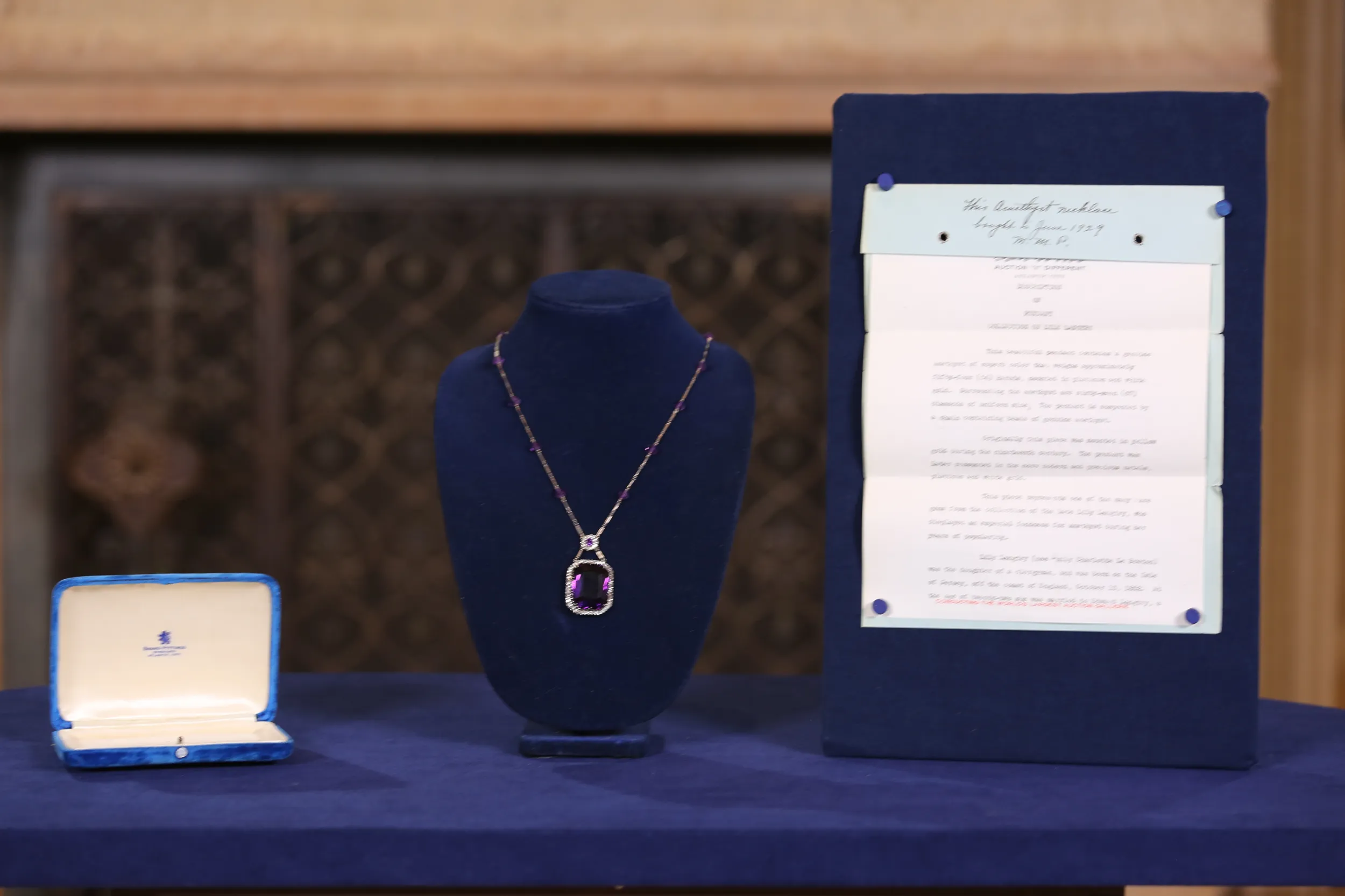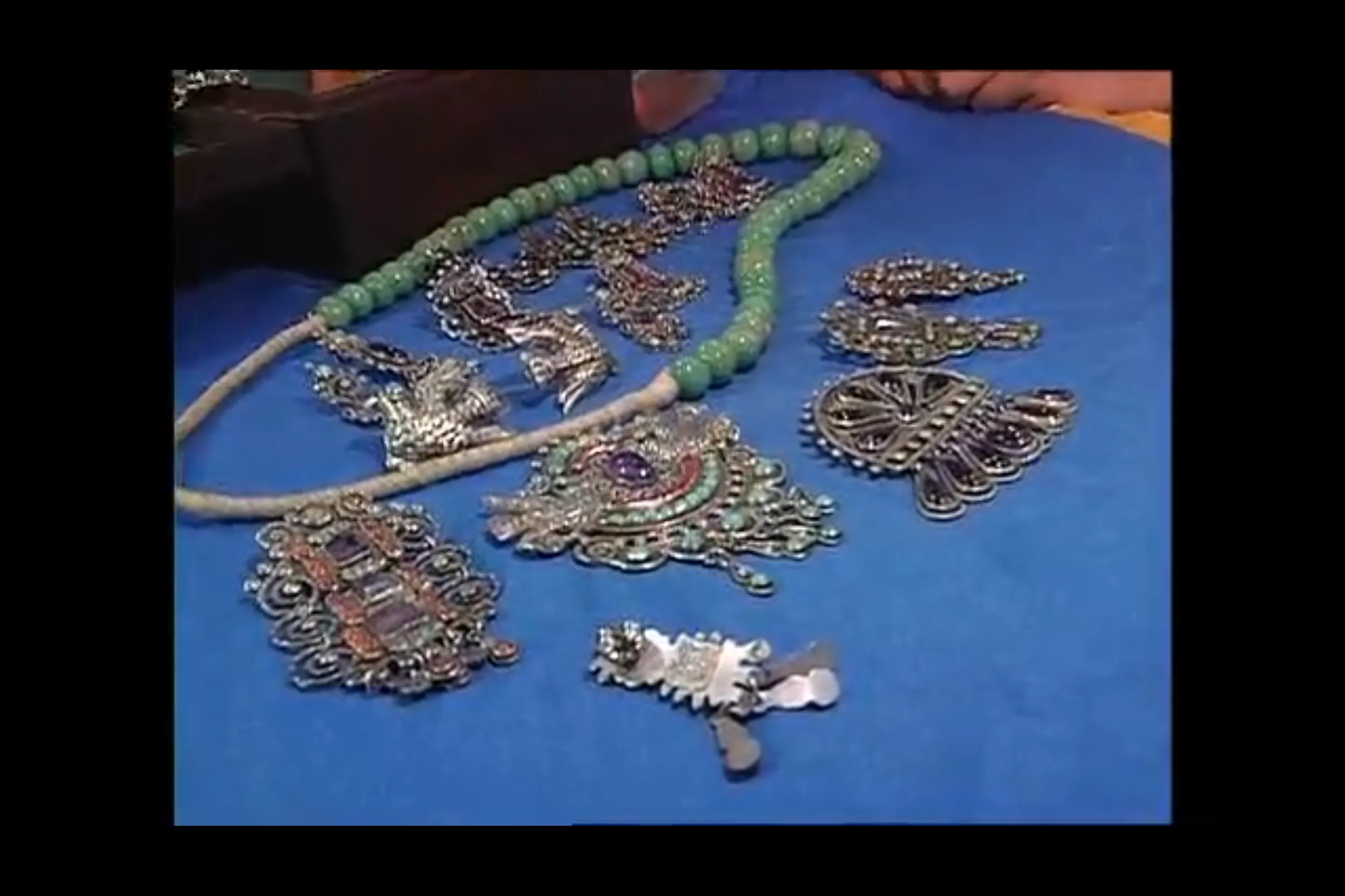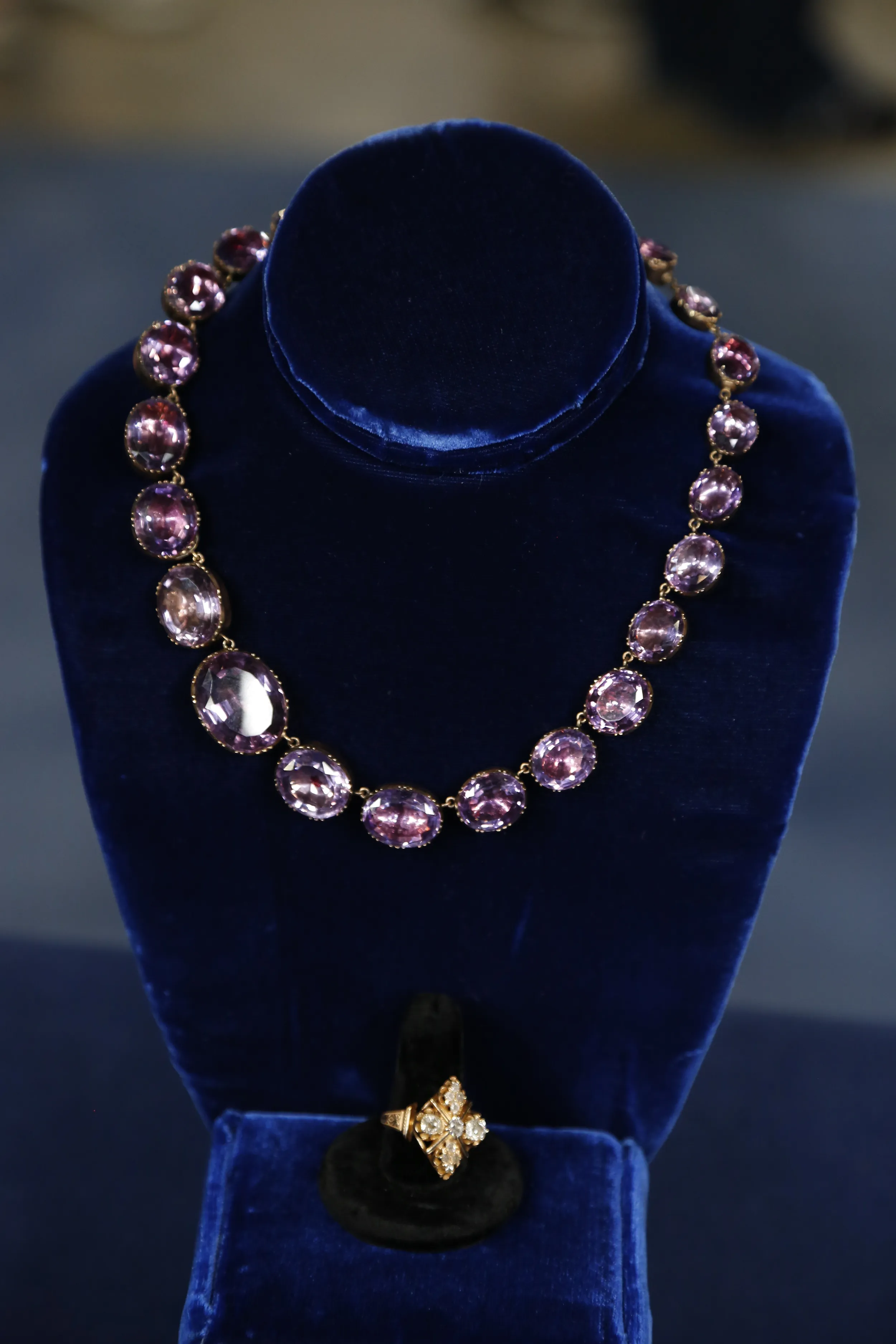HOST: Without knowing anything about this pendant and necklace, it's possible to see how its design and materials tell a somber tale. The pendant is made of agate, yellow gold, black enamel and natural pearls. The style dates it to about 1875. Putting those details together, it becomes apparent that this is Victorian-era mourning jewelry, the original owner a woman who wore it to remember the loss of a loved one. We met up with appraiser Kevin Zavian at a historic Queen Anne-style Victorian house, the Sidbury House in Heritage Park, to discuss mourning jewelry. Kevin, I understand the concept of mourning jewelry didn't start in the Victorian era.
APPRAISER: No, Mark, it goes back to ancient times: the Egyptians, the Greeks, the Romans.
HOST: But it really becomes en vogue after Prince Albert dies and Queen Victoria begins to mourn his death by wearing mourning jewelry.
APPRAISER: Right, she embraces it, so much so that she wore black the rest of her life. She required people to wear black in her courts.
HOST: And so because she was royalty and wearing mourning jewelry, that spread as sort of a fashion statement.
APPRAISER: Oh, it became very fashionable.
HOST: And not just in England, I understand that this spreads all the way over to America.
APPRAISER: What really brings it to America is our Civil War. Hundreds of thousands of men are dying, and this came right over and it starts being manufactured in the United States. So it became very large here also. It was also a sign of wealth and prosperity.
HOST: And there were phases of the mourning process.
APPRAISER: Yes, the first phase they would wear black. After, say, the first year, they could start introducing the color white. And then near the end of the mourning period, they would bring in color; usually a purple amethyst. The first piece is pretty classic. You have a low karat gold, you have black enamel. You have these nice drops so it has a little bit of movement, it's not too stiff, and it's pretty. Although it's for a period in their life that's sad, it still has some beauty because, remember, not only are they mourning a death, but they're also honoring their life. A piece like this today at auction would be $800 to $1,200. But this piece is clearly custom-ordered. This is something that may have been carved in Idar-Oberstein, Germany. This is carved from one piece. The white piece is not applied to the black onyx. The stone comes naturally in layers, and then they carve it away and this is what they end up with. They were great at making jewelry that could serve a dual purpose. So that little bail on top actually folds down, and this also can be worn as a pin. Today, at auction, $1,000 to $1,500.
HOST: And that's without the necklace.
APPRAISER: That's without the necklace. I think if you factor in the necklace, you have to figure $2,000 to $3,000.
HOST: And finally, we have this third piece here and that we see the introduction of that rich, dark purple color. Is this an amethyst stone?
APPRAISER: It's amethyst, it's faceted. What I like is there's still little elements of black enamel, although much tinier on the little flowers. And then you also have the little seed pearls wrapped around the outside. But clearly, she's getting ready to get back to a normal life. A piece like this today at auction would be $1,000 to $1,500.
HOST: Well, very interesting to hear of that sort of tradition of mourning jewelry, and some beautiful examples. Thank you, Kevin.
APPRAISER: You're welcome; thank you.











